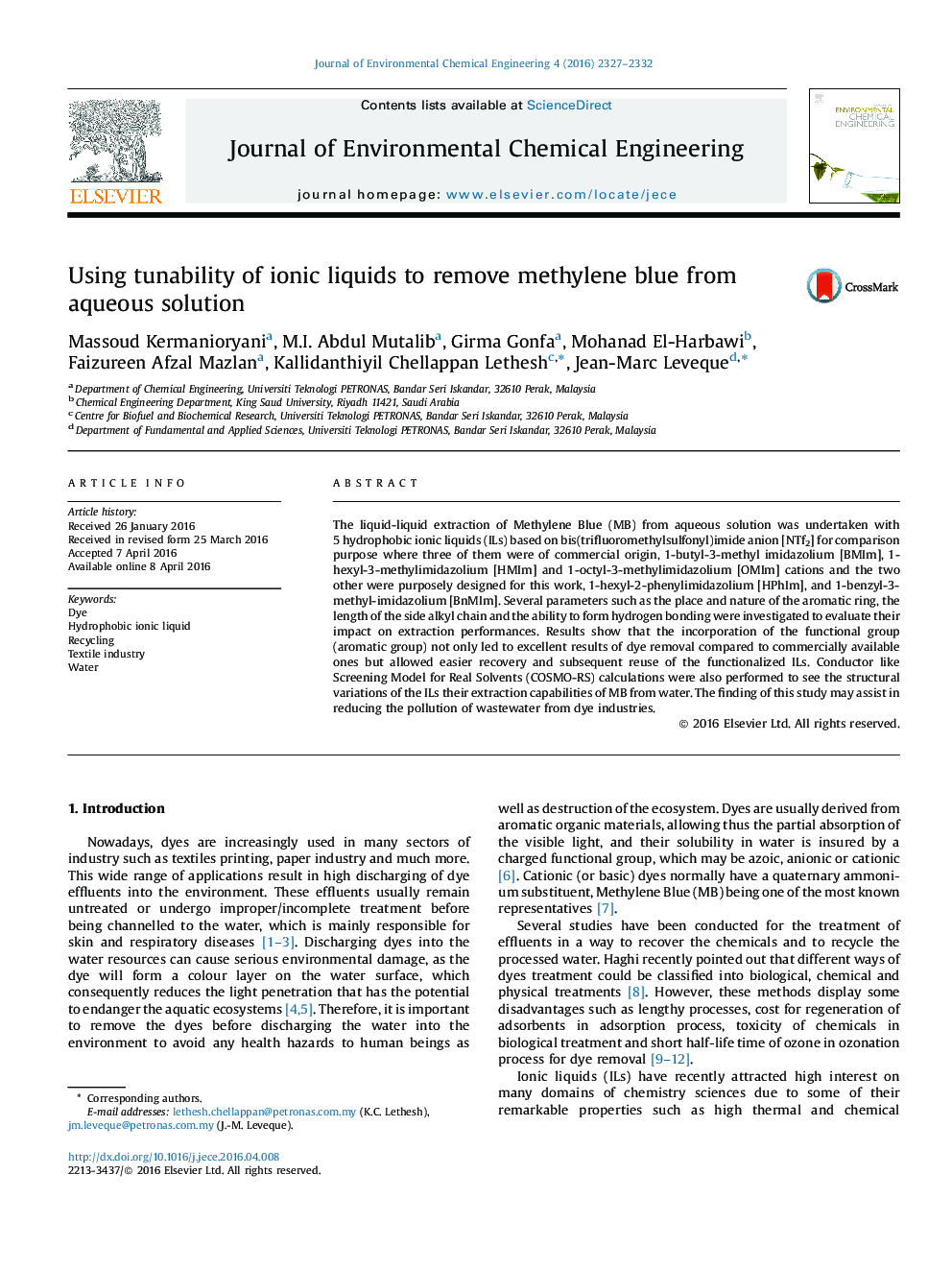| کد مقاله | کد نشریه | سال انتشار | مقاله انگلیسی | نسخه تمام متن |
|---|---|---|---|---|
| 221716 | 464263 | 2016 | 6 صفحه PDF | دانلود رایگان |
• Task Specific Ionic liquids ensure optimal/swift removal of Methylene Blue dye.
• Up to 96% of extraction efficiency achieved from a 500 ppm MB solution.
• Recycling/reuse of the ILs achieved up to 5 times.
• Role of aromatic rings on ILs confirmed by COSMO-RS calculations.
The liquid-liquid extraction of Methylene Blue (MB) from aqueous solution was undertaken with 5 hydrophobic ionic liquids (ILs) based on bis(trifluoromethylsulfonyl)imide anion [NTf2] for comparison purpose where three of them were of commercial origin, 1-butyl-3-methyl imidazolium [BMIm], 1-hexyl-3-methylimidazolium [HMIm] and 1-octyl-3-methylimidazolium [OMIm] cations and the two other were purposely designed for this work, 1-hexyl-2-phenylimidazolium [HPhIm], and 1-benzyl-3-methyl-imidazolium [BnMIm]. Several parameters such as the place and nature of the aromatic ring, the length of the side alkyl chain and the ability to form hydrogen bonding were investigated to evaluate their impact on extraction performances. Results show that the incorporation of the functional group (aromatic group) not only led to excellent results of dye removal compared to commercially available ones but allowed easier recovery and subsequent reuse of the functionalized ILs. Conductor like Screening Model for Real Solvents (COSMO-RS) calculations were also performed to see the structural variations of the ILs their extraction capabilities of MB from water. The finding of this study may assist in reducing the pollution of wastewater from dye industries.
Journal: Journal of Environmental Chemical Engineering - Volume 4, Issue 2, June 2016, Pages 2327–2332
